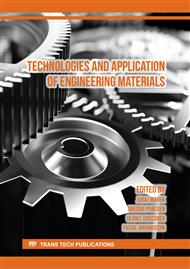p.73
p.81
p.93
p.101
p.111
p.119
p.127
p.135
p.143
Strength Development of Seawater Mixed and Cured Concrete with Various Replacement Ratios of Fly Ash
Abstract:
In certain scenario, seawater maybe the only mixing and curing water available. Normally, concrete mixing requires freshwater, a resource which is expected to vastly deplete as a result of global water scarcity. Seawater which covers more than 70 percent of earth surface has potential to replace the freshwater in concrete. Hence, it is necessary to optimize conditions for its application in concrete, because freshwater reserves are either limited or its transport is costly. Further, the effect of various replacement ratios of fly ash needs further studies to determine applicability on concrete with seawater mixing in particular. Thus, this study aims to examine by which seawater can be employed as mixing water for making concrete, especially for plain concrete. The main objective of this study is to investigate the effect of seawater as mixing and fly ash as supplementary binder at 10%, 20% and 30% for Portland Composite Cement replacement on compressive strength, respectively. The water-to-binder ratio was varied at 40%, 50% and 60%. The specimens were cured (continuous immersion) in freshwater and seawater for 91-days. The results indicated that seawater can be used as mixing and curing water. Compressive strength of concrete increase when using seawater as mixing water and freshwater as curing water especially for w/b of 40%. Also, significant strength development up to 91-days was shown by fly ash concrete when using seawater as curing water and freshwater as mixing water . Effectiveness of seawater curing on strength development of fly ash concrete with w/b of 40% is larger in concrete with freshwater mixing than seawater mixing. The results obtained in this study provide an information in development for applicability seawater in concrete.
Info:
Periodical:
Pages:
111-118
Citation:
Online since:
June 2023
Keywords:
Price:
Сopyright:
© 2023 Trans Tech Publications Ltd. All Rights Reserved
Share:
Citation:



